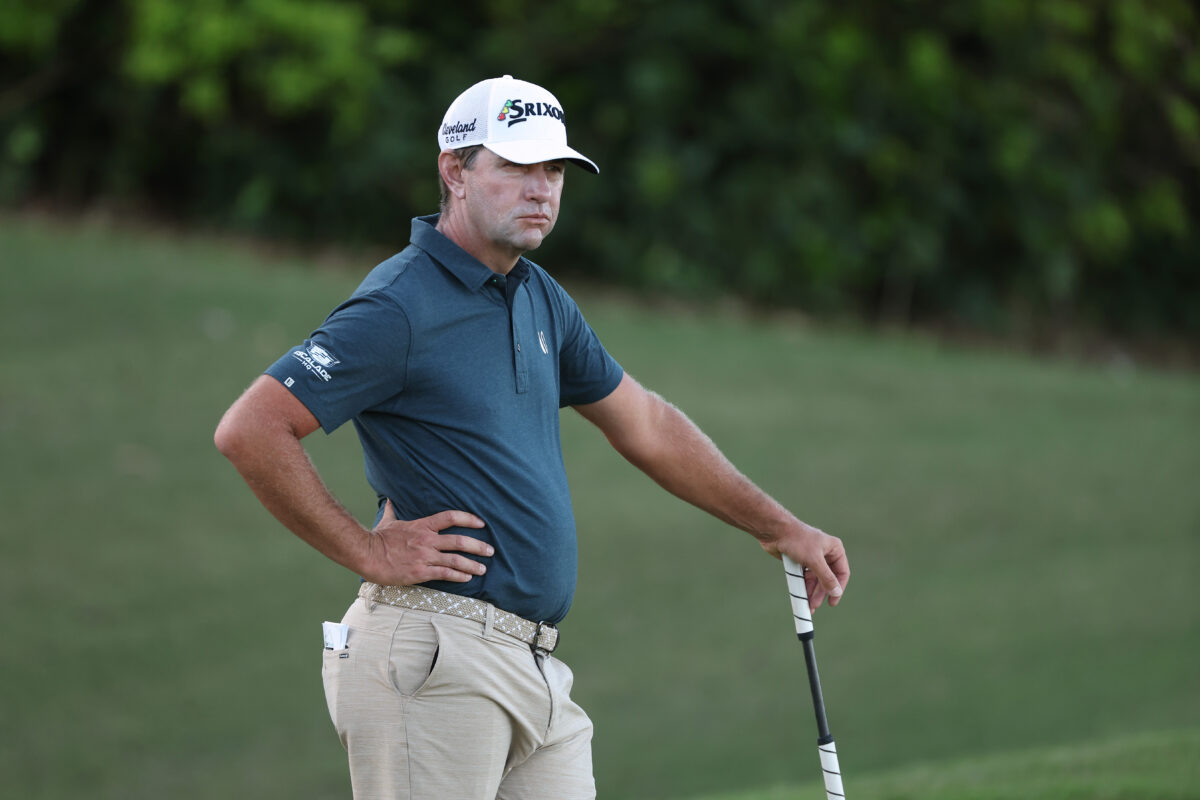As the PGA Tour Policy Board meets Monday to vote on a number of changes that include reducing field sizes and the number of fully exempt cards available beginning in 2026, former U.S. Open champion Lucas Glover has emerged as its most vocal opponent.
“I think it’s terrible,” he said. “And then hiding behind pace of play, I think challenges our intelligence. They think we’re stupid.”
Glover contends that 20 years ago when he was starting out on the Tour, there were no more than a handful of slow players. Now? “We have 50,” he said. “So don’t cut fields because it’s a pace of play issue. Tell us to play faster, or just say you’re trying to appease six guys and make them happy so they don’t go somewhere else and play golf.”
This is a sore subject with Glover, who notes he has been part of the “cool kid meetings and not in the cool kid meetings,” and points out the Tour’s job is to do what’s right for the full membership. “There’s 200 guys that this is their life and their job,” he said.
Gary Young, the Tour’s senior vice president of rules and competition, takes a different view. Will reduced field sizes help the pace of play? “Absolutely it will,” he said. “It’s something that we’ve been saying for years that 156-man fields are too many players. It’s basically 78 players in a wave, 13 groups per side and our pace of play is set somewhere around 4 and half hours. You do the math and if they play in time par, which is basically 2 hours and 15 minutes, they make the turn and all of a sudden the group ahead of them is just walking off the tee because there’s 2 hours and 12 minutes of tee times. It becomes a parking lot. There’s nowhere to go.”
To Young, the solution is larger tee-time intervals and to do that the Tour must reduce the fields.
“We asked ourselves in the PAC meetings if we were starting the Tour from scratch what would be our maximum field size?” Young explained. “As we talked it through with the players on that subcommittee, there was agreement in the room that you would never build it so that groups would be turning and waiting at the turn. So that’s where the whole idea of 144 being our maximum field size, everyone felt that that was the right number, and the mathematics on it worked. You’ll see that some of our other fields have been reduced even further, and that’s due to time constraints.
“So a great example is we play a field size of 144 players at the Players Championship, and there’s not enough daylight for 144 players. But we always placed an emphasis on starts for members, trying to maximize the number of starts they could get in a season, and sometimes, unfortunately, it was at the detriment of everyone else in the tournament. Now we looked at it from strictly how many hours of daylight do we have, and what’s the proper field size for each event on Tour. So we went straight by sunrise and sunset building in about three hours between the waves, which is what you need. And then that gives the afternoon wave some room to run, they’re not starting out right behind the last group making the turn and backing up. So we think that we’ve done a nice job building the schedule and finally getting all the field sizes correct for the future.”
Glover has a better idea.
“You get a better pace of play policy or enforce the one you have better,” he said. “If I’m in a slow twosome and an official came up and said, ‘You guys are behind, this is not a warning, y’all are on the clock and if you get a bad time, that’s a shot penalty,’ guess who’s running to their ball? That’s what we need to be doing.”
But the Tour’s system has shied away from handing out penalty strokes – the current system warns a group that they are out of position, then it gets told they are being put on the clock. If a player exceeds the time limit, the official has to tell them immediately but there is no punishment for the first bad time; not until the second bad time is a player penalized. Young conceded, “You’d have to be somewhat crazy or not paying attention to ever reach that final stage.”
Young acknowledged if the changes to field sizes is approved, it likely won’t mean any significant change to the number of slow play penalties.
“Unless they change the structure of the process, which is a four-tiered process, no,” he said. “If the players themselves want to make a serious change to it and want to visit moving to a penalty phase sooner, it’s their organization, we certainly would implement it if that’s something they want to put into effect. But we’re not there right now.”
Where we are is on the verge of reducing field sizes and not everyone — especially Glover — is happy about it.
